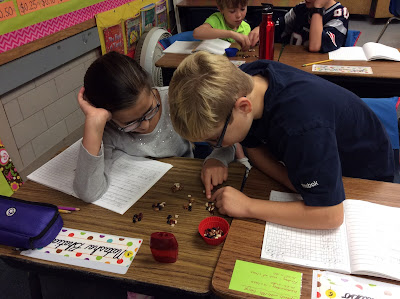In Fundations, we have just started Unit 5, and Week 1 is all about the "schwa" sound! And believe it or not, it's more than just a fun word to say! The schwa sound occurs when a vowel in the unaccented syllable of a word doesn't make the expected vowel sound. For example, in the word "wagon," the 'o' doesn't make the short o sound. Instead, it sounds more like a short i sound. As you can imagine, the schwa sound can make spelling a challenge for young children, so we'll be working with this sound quite a bit in class.
Reading
It's all about NONFICTION in Term 2! Students will be reading informational text, biographies, and autobiographies. The skills needed to read and comprehend nonfiction are more involved, and many of our classroom lessons will focus on specific features of nonfiction text. These will include: headings, captions, labels, special print, charts and graphs, diagrams, insets, sidebars, etc... As third graders, students will learn how to use these features to increase their understanding of text. I encourage you to have your child explore nonfiction books or magazines at home for their nightly reading. Many upcoming Fluency Bag passages will also include nonfiction information.
Students are reading about the geography of Massachusetts. We are using our nonfiction reading skills each day when we dig into our textbook and explore new parts of Massachusetts. So far, students have read about Cape Cod, the North Shore, and the South Shore.
We are still working on our matter unit in science. This week, we will be investigating the properties of gas - asking important questions like: Does air take up space? Does air have weight? Classroom demonstrations will prove that the answer to both of these questions is YES! After these lessons, we will be studying the properties of water, and how it is affected by temperature. Students will be learning about melting, freezing, evaporation, and condensation. Again, if your child loves science and is eager to explore more at home, be sure to check out Steve Spangler science or Bill Nye's website. There are so many fun ways for your child to further their understanding of these concepts!
As always, thank you for all you do at home to support your child's learning!
Be well!




















































